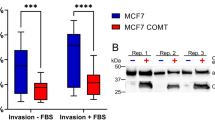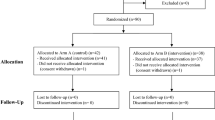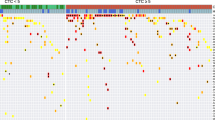Abstract
Oestrogen exposure has long been considered to be a main risk factor of breast cancer. More recently, interest has also focused on the possible carcinogenic influence from oestrogen metabolites, such as catechol oestrogens. O-methylation, catalysed by Catechol-O-Methyltransferase (COMT), is one pathway by which the potentially carcinogenic catechol oestrogens can be inactivated. The gene coding for COMT protein contains a single-nucleotide polymorphism (SNP), resulting in an amino acid shift Val → Met, which has been shown to determine high- and low-activity configuration of the enzyme. We hypothesized that the low-activity allele, COMTMet, may be implicated in early onset breast cancer. In the present case–control study, including 126 young breast cancer patients (≤ 36 years) and 117 healthy female blood donors, we analysed the association between COMTMet genotype and risk of breast cancer. No significant difference in the frequency of low-/high-activity alleles was found between cases and controls, indicating that the polymorphism, as a single factor, may not contribute to breast carcinogenesis in young women. © 2001 Cancer Research Campaign http://www.bjcancer.com
Similar content being viewed by others
Article PDF
Change history
16 November 2011
This paper was modified 12 months after initial publication to switch to Creative Commons licence terms, as noted at publication
References
Ackerman GE, Smith ME, Mendelson CR, MacDonald PC and Simpson ER (1981) Aromatization of androstenedione by human adipose tissue stromal cells in monolayer culture. J Clin & Metab 53: 412–417
Bergman-Jungeström M, Gentile M, Lundin AC & the South-east breast cancer group Wingren S (1999) Association between CYP17 gene polymorphism and risk of breast cancer in young women. Int J Cancer (Pred Oncol) 84: 350–353
Bonnier P, Romain S, Charpin C, Lejeune C, Tubiana N, Martin PM and Piana L (1995) Age as a prognostic factor in breast cancer: relationship to pathology and biological features. Int J Cancer 62: 138–144
Cavalieri EL, Stack DE, Devanesan PD, Todorovic R, Dwivedy I, Higginbotham S, Johansson SL, Patil KD, Gross ML, Gooden JK, Ramanathan RL and Rogan EG (1997) Molecular origin of cancer: Catechol estrogen-3,4-quinones as endogenous tumor initiators. Proc Natl Acad Sci 94: 10937–10942
Dreher D and Junod AF (1996) Role of oxygen free radicals in cancer development. Eur J Cancer 32A: 30–38
Fotsis T, Zhang Y, Pepper MS, Adlercreutz H, Montesano R, Nawroth PP and Schweigerer L (1994) The endogenous oestrogen metabolite 2-methoxyoetradiol inhibits angiogenesis and suppresses tumour growth. Nature 368: 237–239
Harris JR, Lippman ME, Veronesi U and Willett W (1992) Breast cancer. N Engl J Med 327: 319–328
Huang CS, Chern HD, Chang KJ, Cheng CW, Hsu SM and Shen CY (1999) Breast cancer risk associated with genotype polymorphism of the estrogen-metabolizing genes CYP17, CYP1A1, and COMT: a multigenic study on cancer susceptibility. Cancer Res 59: 4870–4875
Lachman HM, Papolos DF, Saito T, Yu YM, Szumlanski CL and Weinshilboum RM (1996) Human catechol-o-methyltransferase pharmacogenetics: description of a functional polymorphism and its potential application to neuropsychiatric disorders. Pharmacogenetics 6: 243–250
Lavigne JA, Helzlsouer KJ, Huang HY, Strickland PT, Bell DA, Selmin O, Watson MA, Hoffman S, Comstock GW and Yager JD (1997) An Association between the allele coding for a low activity variant of catechol-o-methyltransferase and the risk for breast cancer. Cancer Res 57: 5493–5497
Li SA, Purdy RH and Li JJ (1989) Variations in catechol O-methyltransferase activity in rodent tissues: possible role in estrogen carcinogenicity. Carcinogenesis 10: 63–67
Liehr JG (1997) Dual role of oestrogens as hormones and pro-carcinogens: tumour initiation by metabolic activation of oestrogens. Eur J Cancer Prev 6: 3–10
Liehr JG and Ricci MJ (1996) 4-Hydroxylation of estrogens as marker of human mammary tumors. Proc Natl Acad Sci 93: 3294–3296
Lundin AC, Söderkvist P, Eriksson B, Bergman-Jungeström M and Wingren S the south-east Sweden Breast Cancer Group (1999) Association of breast cancer progression with a vitamin D receptor gene polymorphism. Cancer Res 59: 2332–2334
Magnusson C, Baron J, Persson I, Wolk A, Bergström R, Trichopoulos, and Adami H-O (1998) Body size in different periods of life and breast cancer risk in post-menopausal women. Int J Cancer 76: 29–34
Marnett LJ (2000) Oxyradicals and DNA damage. Carcinogenesis 21: 361–370
Millikan RC, Pittman GS, Tse CKJ, Duell E, Newman B, Savitz D, Moorman PG, Boissy RJ and Bell DA (1998) Catechol-o-methyltransferase and breast cancer risk. Carcinogenesis 19: 1943–1947
Nixon AJ, Neuberg D, Hayes DF, Gelman R, Connolly JL, Schnitt S, Abner A, Recht A, Vicini F and Harris JR (1994) Relationship of patient age to pathologic feature of the tumor and prognosis for patients with stage I or II breast cancer. J Clin Oncol 12: 888–894
Scanlon PD, Raymond FA and Weinshilboum RM (1979) Catechol-O-methyltransferase: thermolabile enzyme in erythrocytes of subjects homozygous for allele for low activity. Science 5: 63–65
Sprudle AB, Hopper JL, Dite GS, Chen X, Cui J, McCredie MRE, Giles GG, Southey MC, Venter DJ, Easton DF and Chenevix-Trench G (2000) CYP17 promoter polymorphism and breast cancer in Australian women under age forty years. J Nat Cancer Inst 92: 1674–1681
Taioli E, Trachman J, Chen X, Toniolo P and Garte SJ (1995) A CYP1A1 Restriction fragment length polymorphism is associated with breast cancer in African-American women. Cancer Res 55: 3757–3758
Thompson PA, Shields PG, Freudenheim JL, Stone A, Vena JE, Marshall JR, Graham S, Laughlin R, Nemoto T, Kadlubar FF and Ambrosone CB (1998) Genetic polymorphism in catechol-o-methyltransferase, menopausal status and breast cancer risk. Cancer Res 58: 2107–2110
van den Brandt PA, Spiegelman D, Yaun SS, Adami HO, Beeson L, Folsom AR, Fraser G, Goldbohm RA, Graham S, Kushi L, Marshall JR, Miller AB, Rohan T, Smith-Warner SA, Speizer FE, Willett WC, Wolk A and Hunter DJ (2000) Pooled analysis of prospective cohort studies on height, weight, and breast cancer risk. Am J Epidemiol 15: 514–527
Weber BL and Nathanson KL (2000) Low penetrance genes associated with increased risk for breast cancer. Eur J Cancer 36: 1193–1199
Weisz J (1994) Biogenesis of catecholestrogens: A mechanism for metabolic activation of estrogens. Polycyclic Aromatic Compounds 6: 241–251
Yager JD and Liehr JG (1996) Molecular mechanisms of estrogen carcinogenesis. Annu Rev Pharmacol Toxicol 36: 203–232
Zhong S, Wyllie AH, Barnes D, Wolf CR and Spurr NK (1993) Relationship between the GSTM1 genetic polymorphism and susceptibility to bladder, breast and colon cancer. Carcinogenesis 14: 1821–1824
Zhu BT and Conney AH (1998) Functional role of estrogen metabolism in target cells: review and perspectives. Carcinogenesis 19: 1–27
Author information
Authors and Affiliations
Rights and permissions
From twelve months after its original publication, this work is licensed under the Creative Commons Attribution-NonCommercial-Share Alike 3.0 Unported License. To view a copy of this license, visit http://creativecommons.org/licenses/by-nc-sa/3.0/
About this article
Cite this article
Bergman-Jungeström, M., Wingren, S. Catechol-O-Methyltransferase (COMT) gene polymorphism and breast cancer risk in young women. Br J Cancer 85, 859–862 (2001). https://doi.org/10.1054/bjoc.2001.2009
Received:
Revised:
Accepted:
Published:
Issue date:
DOI: https://doi.org/10.1054/bjoc.2001.2009
Keywords
This article is cited by
-
The association of genetic polymorphisms with neuroconnectivity in breast cancer patients
Scientific Reports (2021)
-
Catechol-O-methyltransferase Val 108/158 Met polymorphism and breast cancer risk: a case control study in Syria
Breast Cancer (2013)
-
Association of COMT Val158Met polymorphism and breast cancer risk: an updated meta-analysis
Diagnostic Pathology (2012)
-
Association between the COMT Val158Met polymorphism and breast cancer risk: a meta-analysis of 30,199 cases and 38,922 controls
Molecular Biology Reports (2012)
-
Catechol-O-methyltransferase Val158Met polymorphism in breast cancer risk
Breast Cancer Research and Treatment (2011)



